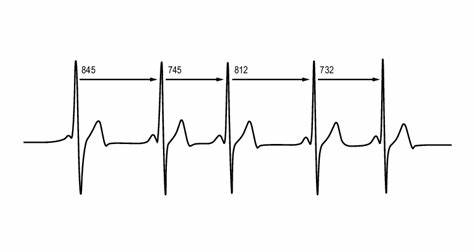-
The Executive Health Assessment
1. Blood Pressure
2. ECG (Heart rate & rhythm)
3. Blood O2 saturation (SpO%)
4. Lung Exhalation & Inhalation
5. HbA1c Blood Glucose %
6. Triglycerides
7. Uric Acid
8. Breath Ketones
9. HRV Stress Test
10. Grip Strength
-
#
Test
Potentially Risky
AUS Averages
Good
Excellent
1
Blood Pressure (mm/Hg)
<150/<100
135/85
120/80
110/75
2
ECG – Resting Heart Rate (BPM)
F:95>, M:95>
F:85M:85
F:75, M:70
F:<65, M:<60
3
ECG – Normal Rhythm
AF
Normal
Normal
Normal
4
Blood Oxygenation – SpO%
90
95
97
99
5
Lung Maximal Power (Litr) - Exhalation
F:<1.0, M:<2.0
F:2.1, M:2.8
F:2.8, M:3.5
F:3.5>, M:5>
6
Lung Maximal Power (secs) - Inhalation
F:1, M:1
F:3, M:2
F:4, M:4
F:6, M:6




















difference-between-burning-sugar-and-fat
What is HRV Testing?
hrv hear tbeats
Heart Rate Variability (HRV) is assessing the Autonomic Nervous System (ANS)
⚕️ Sympathetic (Fight & Flight) Stressed response
⚕️ Parasympathetic (Calm & Collected) Balanced response
The ANS is influenced by; movement patterns, food choices, sleep quality and very much the perception and balance of lifestyle (mental & emotional) stress.
Unlike assessing your heart rate in total beats per minute (e.g., via a heart rate monitor), HRV looks much closer at the exact changes in time between successive heartbeats.
⚕️ Sympathetic (Fight & Flight) Stressed response
⚕️ Parasympathetic (Calm & Collected) Balanced response
The ANS is influenced by; movement patterns, food choices, sleep quality and very much the perception and balance of lifestyle (mental & emotional) stress.
Unlike assessing your heart rate in total beats per minute (e.g., via a heart rate monitor), HRV looks much closer at the exact changes in time between successive heartbeats.
silhouette-2512805_1280
HRV SCORING/ 100
30-45: Vulnerable
46-55: OK
56-65: Well Balanced
65-80: Crushing it
81+: Tibetian Monk
30-45: Vulnerable
46-55: OK
56-65: Well Balanced
65-80: Crushing it
81+: Tibetian Monk
confusion
LOWER HRV SCORING
SYMPATHETIC STRESS SIGNS & BEHAVIOUR
😞 Lingering colds & flu
😞 Niggling and abiding muscle & joint aches
😞 Forever challenged with nutritious sleep
😞 Lowering tolerance and interest in communication (at work & home)
😞 Lowering self-confidence, motivation and belief
😞 Weight gain, usually around the stomach
😞 Craving for sugary food
😞 Being caught out of breath, easily
SYMPATHETIC STRESS SIGNS & BEHAVIOUR
😞 Lingering colds & flu
😞 Niggling and abiding muscle & joint aches
😞 Forever challenged with nutritious sleep
😞 Lowering tolerance and interest in communication (at work & home)
😞 Lowering self-confidence, motivation and belief
😞 Weight gain, usually around the stomach
😞 Craving for sugary food
😞 Being caught out of breath, easily
confusion
HIGHER SCORES
PARASYMPATHETIC SIGNS & BEHAVIOUR
☺️ Motivated for work,
☺️ Interested in new tasks,
☺️ Sleep solidly for 6-8hrs, including nutritious REM,
☺️ Keen to exercise, and early in the day,
☺️ Comfortable sitting for longer periods, if required,
☺️ Regular bowel movements,
☺️ Improved listening skills,
☺️ Hunger satisfied for long periods.
PARASYMPATHETIC SIGNS & BEHAVIOUR
☺️ Motivated for work,
☺️ Interested in new tasks,
☺️ Sleep solidly for 6-8hrs, including nutritious REM,
☺️ Keen to exercise, and early in the day,
☺️ Comfortable sitting for longer periods, if required,
☺️ Regular bowel movements,
☺️ Improved listening skills,
☺️ Hunger satisfied for long periods.
confusion

